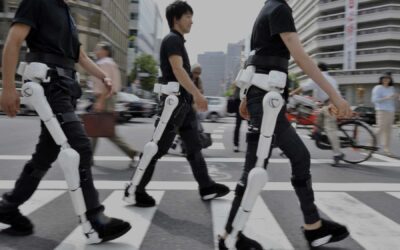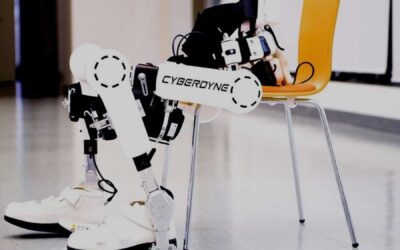The Wearable Cyborg™ HAL enhances the wearer’s functionality. Treatments for neuromuscular disorders, spinal cord injuries, and stroke are available. Through clinical applications, the impact of this therapy approach on promoting lower limb, upper limb, and body trunk functions is being reported.
Patients from all over the world are benefiting from cyberdyne treatment in India. The proper people are now treating patients, who would have otherwise had difficulty accessing care, and at such reasonable costs. India provides services for roughly 50% less than in other nations.
Cerebrovascular Therapy using Cyborg

The patient has consciously chosen to engage in a controlled activity. The brain receives the positive feedback from the muscles. Using Halt® therapy throughout the rehabilitation phase, the muscles strengthen, the gait considerably improves, it becomes safer, and the need for walking aids can be decreased.
Hal® has the ability to read the signal and control the power unit to help the person’s joint move in unison. Utilising the bio-electrical signal that represents the wearers’ intended motions, HAL® facilitates interactive biofeedback between the brain, the neurological system, and the muscular system both inside and outside the body.
HAL assist Treatment for Cerebrovascular Diseases
The treatment includes cerebrovascular illnesses among its goals. Through clinical applications, the impact of this therapy approach on promoting lower limb, upper limb, and body trunk functions is being reported.
For patients with slowly progressing cerebrovascular disorders, the use of wearable, cyberdyne Hybrid Assistive Limbs (HAL) enhances ambulatory performance.

The only device of its kind that has received approval is the robotic suit Hal®, which uses the skin surface of the lower limbs to capture electrical impulses from the brain and provide motorised assistance.
After a sensor attached to the skin senses the wearer’s bioelectric potential signal, HAL® initiates the activity. Nerve signals from the brain are sent to the leg muscle. The skin sensors of the patient record these impulses.
Rehabilitation
Rehab centres of the highest calibre rely on our sensor technology to make daily advancements in rehabilitation. Find out how you can use Cyberdyne technology to accomplish the same. With increased physical strength and endurance, the “Wearable Cyborg™ HAL” enables you to be mobile.
After receiving approval from Japan’s Ministry of Health, Labour, and Welfare, a clinical research was carried out. The outcomes were utilised to secure Japan’s clearance of a medical device intended to treat people with cerebrovascular illness.
The transmission of voluntary command signals from the human brain to the musculoskeletal system via the spinal cord and peripheral nerves is not the only factor in promoting functional improvement with Cyberdyne Treatment; what’s more important is the brain’s return of feedback upon experiencing actual movement.
Recovery Process
Recovery facilities rely on sensing technology to make daily progress in rehabilitation. It is possible to do the seemingly impossible with “Cyberdyne Technology”! Hal, the “Wearable Cyborg™ ,” can assist you in standing up with remarkable strength and stamina.
Connect with us at https://rehabmodalities.com/ to learn more about the Cyberdyne journey!



